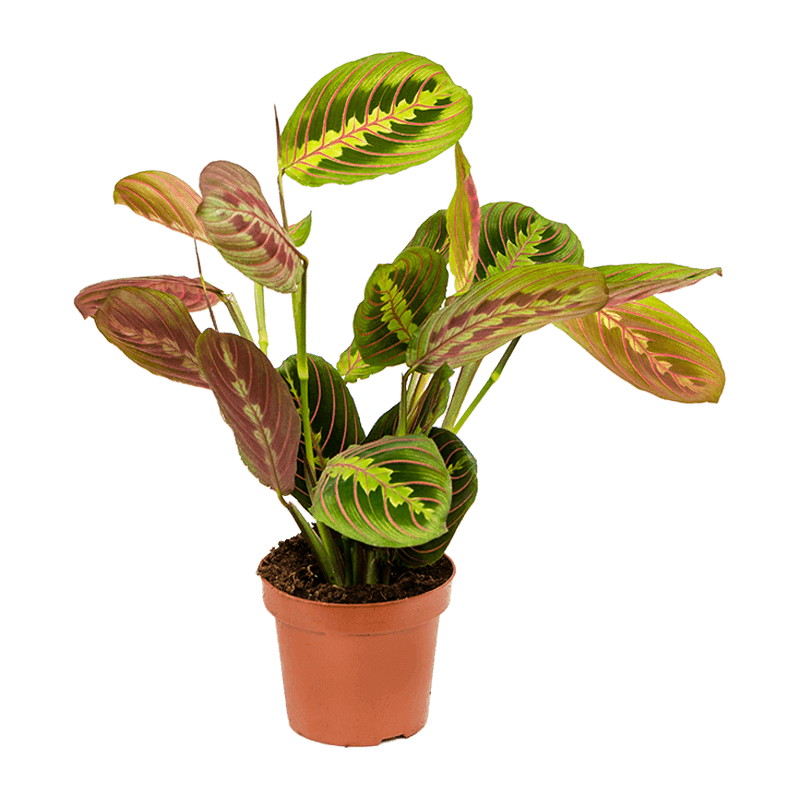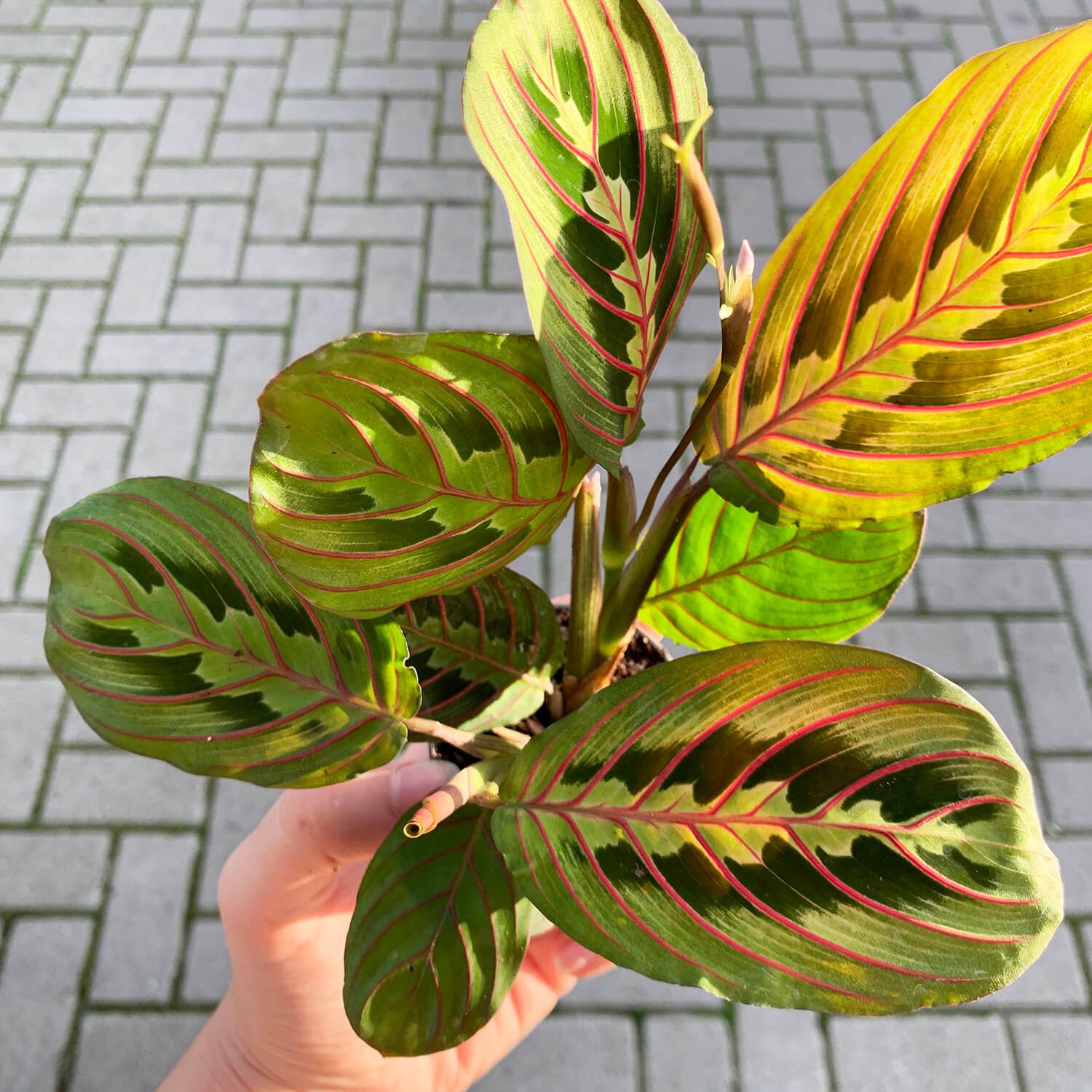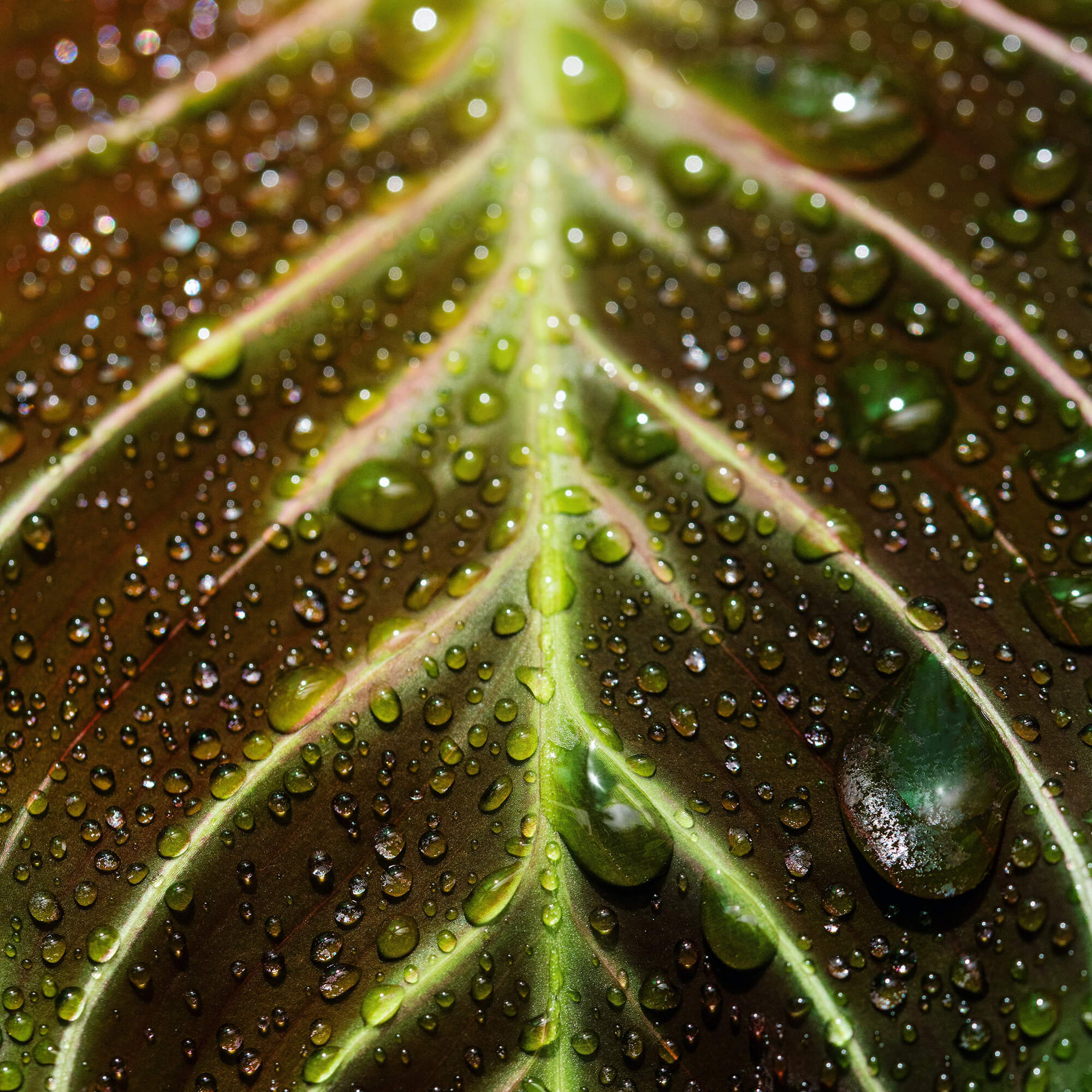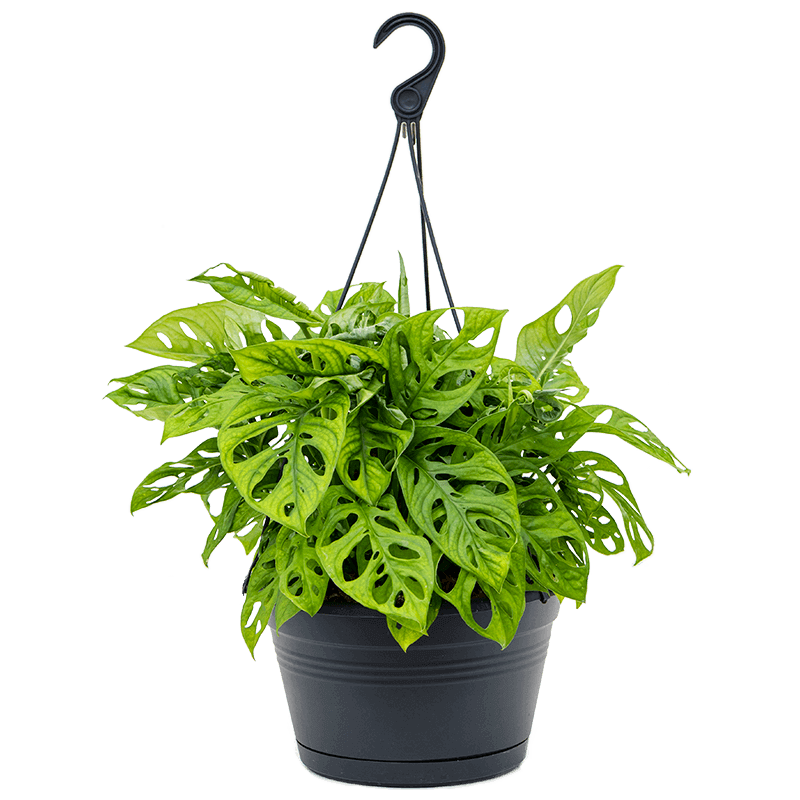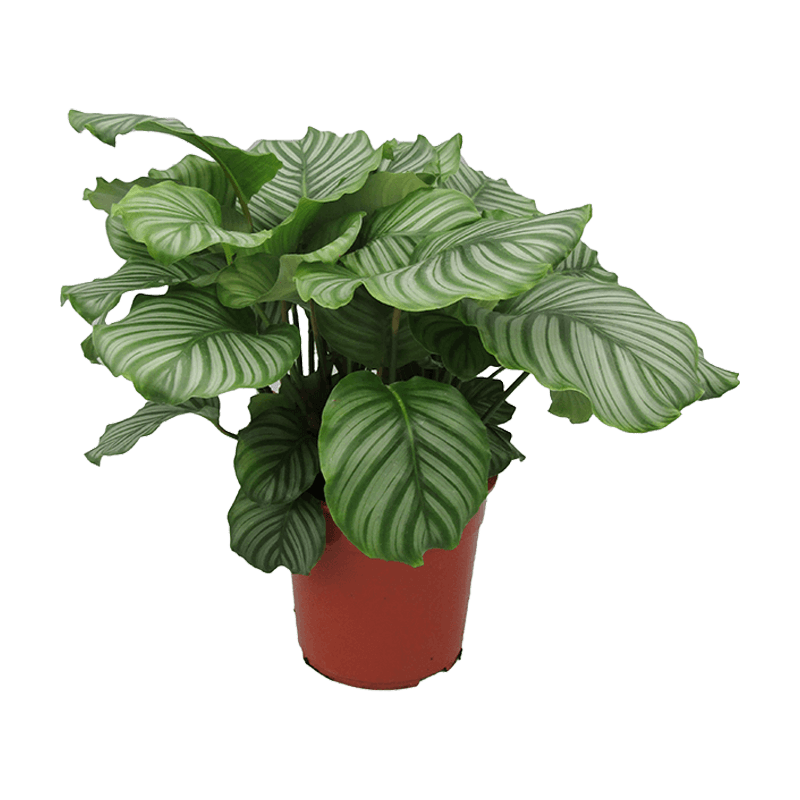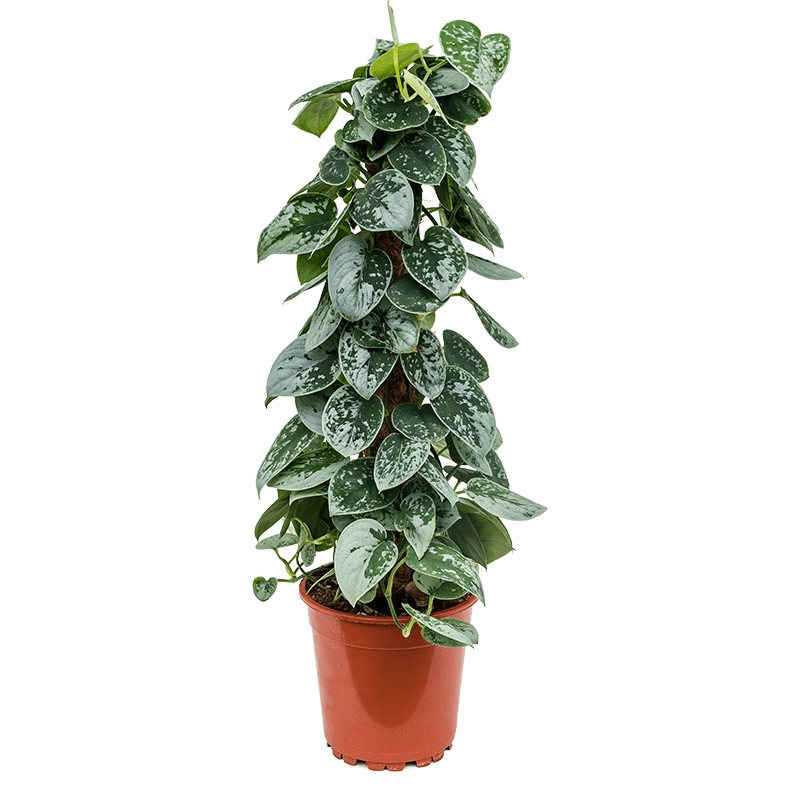how to care for maranta leuconeura
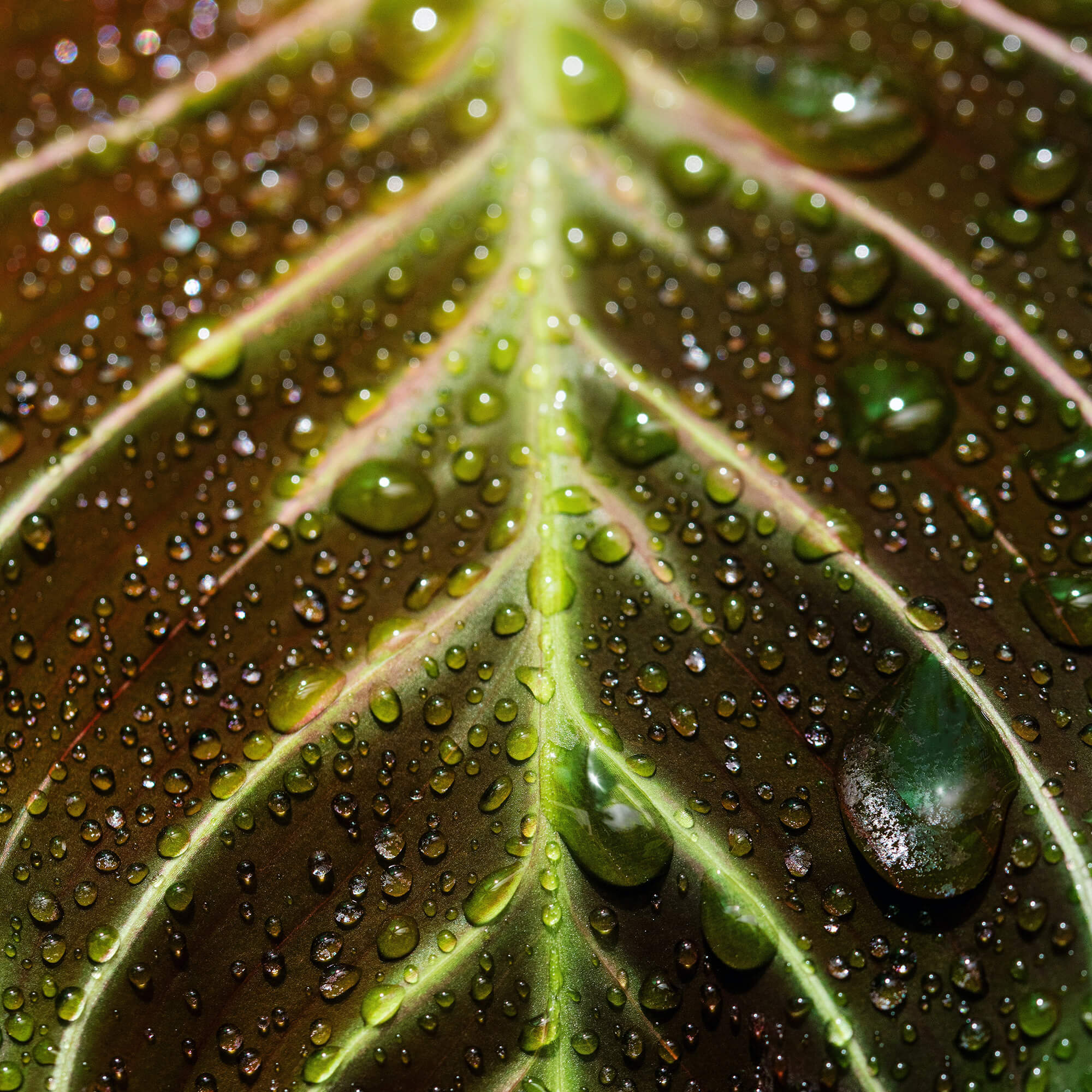
quick care guide for maranta leuconeura
 |
Every 1-2 weeks in summer; every 3 weeks in winter |
 |
Does best in medium to bright indirect light |
 |
Fertilize once every two weeks in the summer |
 |
Pet friendly |
 |
Strong air purifier |
Prayer plants need well-draining, but constantly moist potting mix, bright indirect light, high humidity and temperatures of 18 – 24°C. Fertilize every 2 weeks during the growing season and prune up to three times per year as desired
detailed care guide for maranta leuconeura
Scientific Name: Maranta Leuconeura
Varieties: (list only includes most popular marantas kept indoors)
- ‘Kerchoveana’ a.k.a. Rabbit’s Foot or Green Prayer Plant – most common variety; the leaves of this maranta plant are green-grey with darker green markings on both sides of the central vein; the undersides of the leaves are silvery green
- ‘Erythroneura’ a.k.a. Red Prayer Plant – glossy dark-green leaves with pronounced red-colored veins in the leaves; reddish-purple leaf undersides
- ‘Leuconeura’ a.k.a. Black Prayer Plant – large striking dark green oval leaves with thin pink veins extending from the center; the underside leaves are reddish-purple
- ‘Marisela’ – red-pink and white leaves with hints of green
- ‘Kim’ – cream-colored herringbone-like patterns; the beautiful foliage is in various shades of light and dark green
Origin: Brazil
Light: Not picky about where they are placed but as long as they are not exposed to direct sunlight. Bright – but indirect – light is best, and when in doubt, remember that prayer plants can survive just fine in areas of lower light.
Water: Water your Maranta plant enough so that the soil is always slightly damp. To know when to water your prayer plant, touch the top layer of soil. If it is dry, water it thoroughly.
Soil: Does fine with regular potting soil
Temperature: 18°C – 24ºC
Fertilizer: Twice a month during growing season. Flush the soil a few times per year to avoid buildup.
Humidity: Prayer plants require high humidity levels similar to their native rainforest environment. Mist prayer plants regularly (up to once a day), use a humidifier or sit them on a pebble tray with water to help increase humidity.
Pruning: Prune your prayer plant by cutting just above leaf nodes using a pair of sterilized garden scissors. Pruning two or three times a year (best times are in fall and spring) helps to encourage bushy growth. Pruning a prayer plant also helps to remove any leggy stems or dead leaves.
Re-Potting: Prayer plants are slow-growing plants and don’t require repotting very often. A sign you need to repot your prayer plant is a lack of growth. All you need to do is transfer your plant to a pot 5 cm wider than its current container. Add some fresh potting mix.
Propagation: Propagate your prayer plant in the spring by cutting off healthy stems just below the last node at the base. Remove the first pair of leaves from the bottom. Put in a pot containing potting soil and perlite. Place in a bright location and cover with plastic that has some holes in it.
Diseases and Pests: Leaf spot, also known as helminthosporium leaf spot, is one of the most common diseases to afflict prayer plants. This disease can be deadly if not treated quickly. It is caused by overwatering and can be slowed by adjusting your rate of watering. You’ll know your plant has leaf spot if you notice that water-soaked spots are appearing all over your plant’s leaves. These yellow spots spread quickly, eventually looking tan in appearance. They may also have small yellow halos.
Pests that can affect maranta plants include aphids, spider mites, and mealybugs. Proper care usually helps to keep diseases such as fungal diseases and leafspot to a minimum. Not over-watering your plant and regular misting helps to keep roots healthy and spider mites away
Toxicity: The Maranta Leuconeura is not poisonous to humans, cats, or dogs.
maranta leuconeura origins & overview
Generally, the term prayer plant refers to leafy houseplants in the genus Maranta. Identifying species in the genus Maranta can be confusing because it is related to plants in the genus Calathea, which are also called prayer plants. Both genera are in the family Marantaceae, but they are a different species.
The leaves of Maranta and Calathea plants turn up into a prayer pose at dusk in a process called nyctinasty. All plants in both general have ornately patterned leaves, and some have colorful striped markings. Some species and cultivars also have leaves with different colored undersides from the top side.
This article deals specifically with how to care for cultivars in the Maranta leuconeura species. Because marantas and calatheas are related, the care tips also apply to both types of plants.
In the wild, prayer plants are perennial flowering plants that bloom in spring with small, white flowers. As a houseplant, prayer plants rarely flower. It is the stunning beauty of the plant’s foliage that has made this a household favorite. Even in low-light conditions, prayer plants continue to grow well and thrive.
These easy-to-grow houseplants have roots called rhizomes that look like small potatoes or tubers. A prayer plant can grow up to 30 cm tall and has evergreen oval leaves with unusual markings.
maranta leuconeura light requirements
The best location for your prayer plant is in a bright, warm place. Anywhere in a room or office that is well-lit, free from drafts, and not beside a radiator is ideal. The most important advice is to keep prayer plants away from direct sunlight. Usually, a south- or west-facing room is an excellent place to grow your prayer plant. If you want to put your prayer plant on a windowsill, make sure it’s behind a sheer curtain to protect it from the sun’s rays. Getting too much direct light can be a reason why the tips of the leaves turn brown. One of the best things about caring for prayer plants is that they also grow well in darker, low-light areas. The low light is similar to their native growing environment on the rainforest floor when sunlight can be minimal. Stems that become long and spindly is one sign that your prayer plant needs more light. So, if you notice that stems are getting leggy, move the prayer plant to a brighter location and prune off the leggy stems.how to water the maranta leuconeura
What’s more important than soil for your prayer plant is ensuring that it has optimal drainage. Prayer plants have exceptionally fine roots that grow in a shallow (yet dense) spread. They are susceptible to root rot, so you need to make sure the planting medium and container are both well-draining. If your plant’s container does not have a well-draining bottom, consider drilling extra holes or using an even lighter planting medium. You want to make sure you water well enough so that your soil does not become dried out, but not so often that it becomes soggy. When you touch the soil of your prayer plant, it should be slightly damp to the touch. Use room temperature water to hydrate your plant, allowing the plant time to adjust to the water. Water that is too cold will chill the roots of your plant and cause stress, which can shock its system and result in leaf-dropping behavior. Try to water the plant in the morning. Many people are already aware of this watering tip if they have outdoor plants or a lawn that needs to be regularly watered. However, the same rule applies for houseplants. Watering in the morning will give your plant an entire day to absorb the moisture, and will allow excess water on the leaves to evaporate. If you notice that your plant has begun to develop dark spots on its leaves, cut off the damaged leaves at the base and throw them away. This is a symptom of leaf spot, caused by fungal growth as a result of nighttime watering. Exactly how much water your plant will need will be dependent on so many circumstances, so a regular timeline is something only you can determine once you get your plant home. Just because your plant is thirsty one week doesn’t mean it will require the exact amount of water next week. While your plant will need lots of water in the spring and summer months (periods of rapid growth and heat), you can reduce your watering in the winter months. Whenever possible, use filtered water to water your plants. This will help prevent contamination by chemicals such as chlorine or fluoride, which can negatively impact your plant and affect its overall growth. If you don’t have access to a water filter, letting the water sit for a day or two before using it can also help some of the chemicals dissipate.repotting the maranta leuconeura
Prayer plants won’t need to be repotted often, but when they become root-bound, they will grow much more slowly. This will indicate that it is time to change containers. If you decide to repot your prayer plant, you should only do so in the spring or summer months. This will help prevent cold weather shock during the plant’s dormant period. When your container is full of roots, you will notice that your potting mix dries out quickly and your prayer plant grows slowly. To repot, choose a container that is about 5 cm wider than the existing pot. Remove your plant from its current home and place it in the new pot (make sure you add a bit of extra soil mix, too). Water well for the first few days after transplanting. If you are interested in propagating your plant, you can divide it into smaller plants. To do this, simply shake the soil off the roots and work them apart. Each new plant will have a healthy, large mass of roots, as well as several stems. You can replant these smaller plants in shallow pots. When you repot, make sure you are potting in wide, shallow pots. Prayer plants’ roots don’t need a ton of room, but they need plenty of air. To make sure they have enough oxygen, consider repotting every other year.

Decorative pots are approx. 11 cm.

Plants have a diameter of 11 to 13 cm.
Decorative pots are approx. 14 cm.

Plants have a diameter of 14 to 16 cm.
Decorative pots are approx. 17 cm.

Plants have a diameter of 17 to 19 cm.
Decorative pots are approx. 20 cm.

Plants have a diameter of 20 to 24 cm.
Decorative pots are approx. 25 cm.
extra small |
Plants - 8 to 10 cm diameter Pots - 11 cm |
small |
Plants - 11 to 13 cm diameter Pots - 14 cm |
medium |
Plants - 14 to 16 cm diameter Pots - 17 cm |
large |
Plants - 17 to 19 cm diameter Pots - 20 cm |
extra large |
Plants - 20 to 24 cm diameter Pots - 25 cm |

